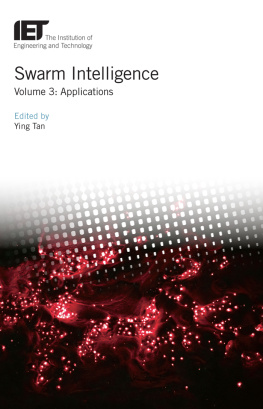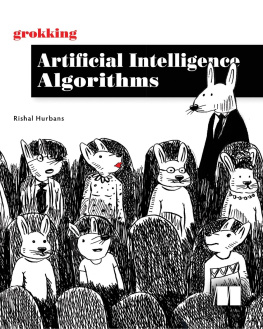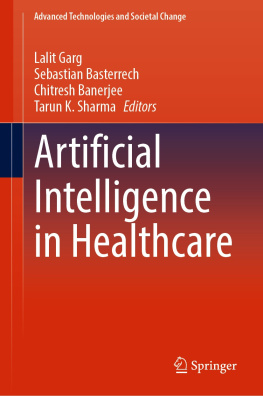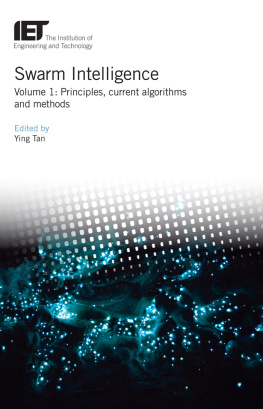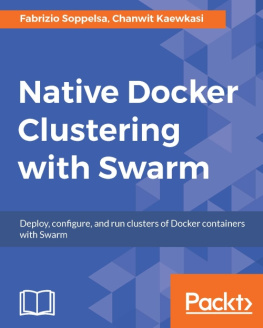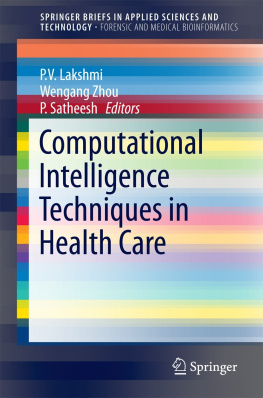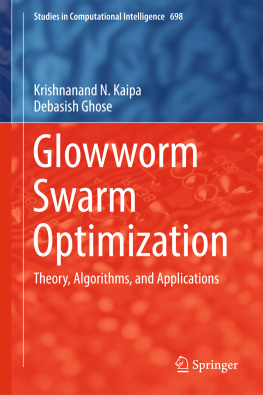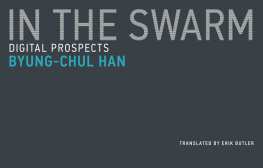About the editor
Dr. Ying Tan is a full professor of Peking University, and director of Computational Intelligence Laboratory at Peking University. He is also a professor at Faculty of Design, Kyushu University, Japan. He worked at Columbia University as a senior research fellow in 2017 and at Chinese University of Hong Kong in 1999 and 20042005 as a research fellow, and he was as an electee of 100 Talent Program of Chinese Academy of Science (CAS) in 2005. As a visiting professor, he visited many universities including University of California at Santa Cruz, Kyushu University, Auckland University of Technology, City University of Hong Kong, etc. He is the inventor of Fireworks Algorithm (FWA). He serves as the Editor-in-Chief of International Journal of Computational Intelligence and Pattern Recognition (IJCIPR), the Associate Editor of IEEE Transactions on Evolutionary Computation (TEC), IEEE Transactions on Cybernetics (CYB), IEEE Transactions on Neural Networks and Learning Systems (NNLS), International Journal of Swarm Intelligence Research (IJSIR), International Journal of Artificial Intelligence (IJAI), etc. He also served as an Editor of Springer's Lecture Notes on Computer Science (LNCS) for 30+ volumes, and Guest Editors of several referred journals, including IEEE/ACM Transactions on Computational Biology and Bioinformatics, Information Science, Neurocomputing, Natural Computing, etc. He is the founder general chair of the ICSI International Conference series since 2010. He won the 2nd-Class Natural Science Award of China in 2009 and many other awards from academic communities. His research interests include swarm intelligence, swarm robotics, data mining, pattern recognition, intelligent information processing for information security and financial applications, etc. He has published more than 300 papers in refereed journals and conferences in these areas and authored/coauthored 15 books and 20+ chapters in book and received four invention patents.
Acknowledgments
I appreciate the contributors of each chapter for their great work that consists of the main components of this book set in such cutting-edge topics on swarm intelligence. In addition, I owe my gratitude to all the authors who promptly responded my call for chapter proposal, for their valuable participation which makes our work more competitive.
I also would like to thank the valuable experts and reviewers for their constructive suggestions, and earnest and strict reviews to each chapter assigned to them, whose efforts and hard work guarantees such a high-level quality of this book.
For such a tedious editing workload, beside my own hard work and efforts, I have also received a plenty of help and support from my colleagues and graduate students. Without their help, I could not complete such a great work.
I am graceful to Val Moliere, Senior Commissioning Book Editor of The Institution of Engineering and Technology (IET), and Olivia Wilkins, Assistant Editor of the IET for their kind coordination and suggestions during the whole editing process of this book set. In addition, I am also grateful to Mr. Srinivasan N, an energetic editor of the MPS Limited, who has done a lot of editing work during the production of this book.
I want to thank everyone who gave me any assistance or help in the research of such an innovative idea and an amazing work on the title of swarm intelligence.
This book is dedicated to my wife Chao Deng and my daughter Fei Tan for their unconditional love; without their unselfish and salient supports and encouragements, it is impossible for me to make such great work a reality.
While working on this book, I was supported by the Natural Science Foundation of China (NSFC) under grant no. 61673025 and 61375119, and I was also partially supported by National Key Basic Research Development Plan (973) Project of China with grant no. 2015CB352302.
Ying Tan
December 12, 2017
Beijing, China
Chapter 1
Standard fireworks algorithm 2017
Yifeng Li
1Key Laboratory of Machine Perception (MOE), Department of Machine Intelligence School of Electronics Engineering and Computer Science, Peking University, China
2Department of Machine Intelligence, Peking University, China
Abstract
Fireworks algorithm (FWA) [] is a novel evolution algorithm developed since 2010. Unlike other population-based algorithms, individuals in FWA cooperate to control their behavior and allocation of computation resource. Instead, most algorithms like particle swarm optimization (PSO) concentrate on the moving of populations. Firework algorithm was well studied in these years. There has been theoretical analysis, engineering applications and algorithm improvements in FWA, making it a well-known and competitive optimization method.
Plenty of researchers are trying to test and adjust some old operators or introduce new ones in order to improve FWAs performance. However, these works contribution to the further development of FWA is indeed limited for several reasons. The most common problem is the selection of benchmark functions. Some researchers chose old-fashioned functions, and some of them designed their own. Besides, some researchers did not explain how they fine-tuned the hyperparameters of the old algorithms in detail. In experiments, some researchers chose a relatively old version of FWA as the base of their new algorithm, even though some parts of these old algorithms have already been proved inefficient. So, their methods might not be valid for the later versions of FWA. When some researchers designed a set of operators, sometimes, they neglect to test each combination of the new and the old ones. Thus, we do not know how each operator works and how they cooperate with each other.
So, we gathered some works on FWA and did a series of experiments on the latest benchmark functions of CEC2017 [], hoping to get a set of operators that is both simple and effective (do not have to perform best), and form the standard FWA in 2017. On the one hand, this would help researchers to stop worrying about on which version of FWA they should implement their ideas and on which they should test them. And on the other hand, this is a summary of the development of FWA and the experiments can reveal some of the abilities of those methods.
concludes the chapter and discusses the further researches on FWA.
1.1 Introduction to fireworks algorithms
Based on the framework of original fireworks algorithm (FWA), researchers have introduced different methods, usually related to their previous works, to improve its performance. Testing all of these methods is impossible because we have to combine different operators and adjust their hyperparameters. We choose those works that are efficient and influential, with another important consideration that they should be simple for both understanding and implementation at the same time. In this way, we hope to get to an appropriate baseline algorithm for later research.
In this section, we explain the framework of FWA and discuss the function of each component and their practical implementations. Then, we introduce some important versions of FWA, mostly concentrating on their novel key operators we are going to test.
1.1.1 Principle of fireworks algorithm
FWA is inspired by the fireworks explosion in the night sky. In real life, a firework rises and explodes, generating a shower of sparks filling a local area. Then, some of the sparks explode again and gradually lighten up the whole sky. In FWA, each generation is also called a group of fireworks. Each firework explodes and generates a group of sparks around. Then, a new group of fireworks is selected from former fireworks and sparks as the next generation of fireworks. Mutation operators and communication operators are introduced in further works to improve the efficiency of optimization. shows the flowchart of FWA framework.


